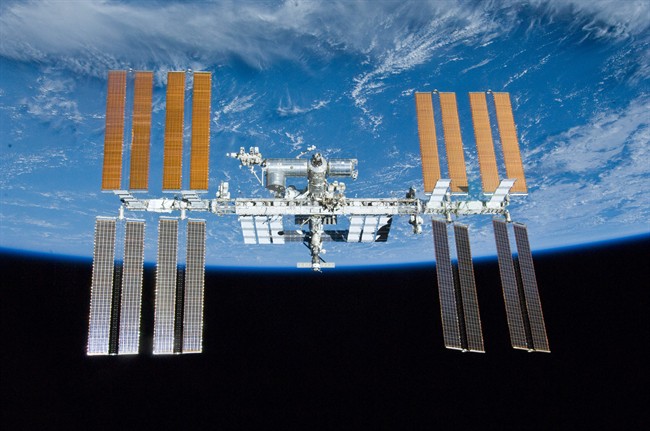It’s an orbiting laboratory that is, on average, home to six human beings and, this week, you can see it for yourself.

The International Space Station (ISS) will be passing over Canada over the next week.
READ MORE: WATCH: NASA releases 4K timelapse of space station move
The station’s orbital track changes from time to time, which is why it’s not always visible.
From Wednesday to Sunday, you can pop outside to see the bright station pass ahead.
To find out when, you can visit either NASA’s Spot the Station site, or visit HeavensAbove.com. Spot the Station allows you to sign up for alerts when the station will be passing in your area.
So where to look?

First, you should know that, when referring to the sky, astronomers use degrees. The rule is that one degree is roughly the width of your pinky finger at arm’s length. Five degrees is the width of your three middle fingers (index to ring) held at arm’s length. Ten degrees is approximately the width of your fist held at arm’s length.
You’ll see that you’re given the maximum height. Remember that 90 degrees is right above you, called the zenith. Now it tells you when it appears and disappears and in what direction.
You see in the images above that for Oct. 19 the station first appears 58 degrees above the horizon in the northwest. Just look to the northwest (remember the fist rule) roughly six fist widths above the northwestern horizon.
You might not notice it right away, but as it approaches, you’re sure to see it. It looks like a fairly slow-moving plane moving across the sky. It can vary in brightness night after night and sometimes will even increase in brightness as it passes. This is caused as sunlight reflects off the station.
On average the ISS is about 350 km above Earth.


Comments